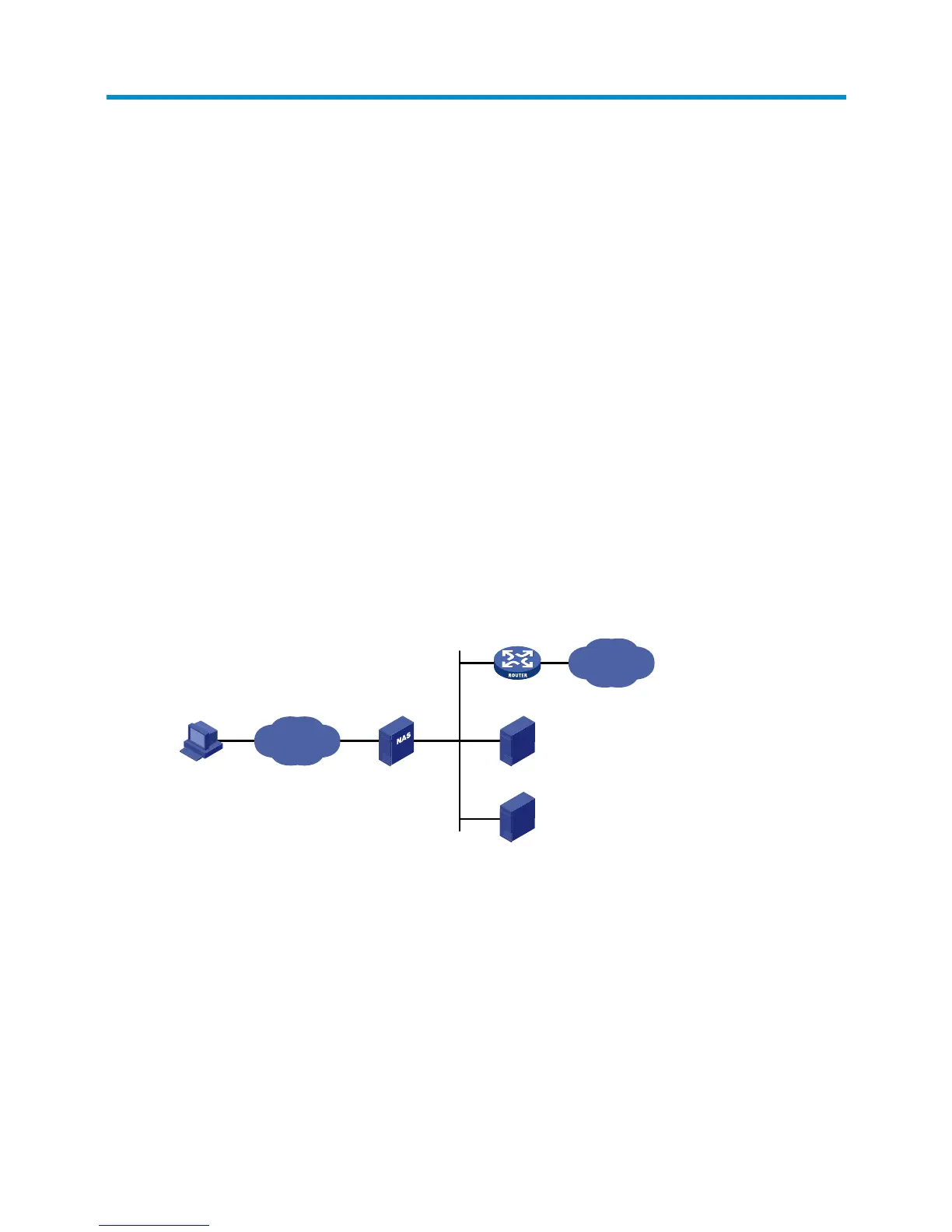352
Configuring AAA
Overview
Authentication, Authorization, and Accounting (AAA) provides a uniform framework for implementing
network access management. It provides the following security functions:
• Authentication—Identifies users and determines whether a user is valid.
• Authorization—Grants user rights and controls user access to resources and services. For example,
a user who has successfully logged in to the device can be granted read and print permissions to
the files on the device.
• Accounting—Records all network service usage information, including service type, start time, and
traffic. The accounting function provides information required for charging, and allows for network
security surveillance.
AAA application
AAA typically uses a client/server model, as shown in Figure 334. The client runs on the network access
server (NAS), which is also called the access device. The server maintains user information centrally. In
an AAA network, the NAS is a server for users but a client for AAA servers.
Figure 334 AAA application scenario
The NAS uses the authentication server to authenticate any user who tries to log in, use network resources,
or access other networks. The NAS transparently transmits authentication, authorization, and accounting
information between the user and the servers. The RADIUS protocol defines how a NAS and a remote
server exchange user information.
The network shown in Figure 334 c
ontains two RADIUS servers. You can choose different servers to
implement different security functions. For example, you can use RADIUS server 1 for authentication and
authorization, and RADIUS server 2 for accounting.
You can implement any of the three security functions provided by AAA as needed. For example, if your
company wants employees to be authenticated before they access specific resources, configure an
authentication server. If network usage information is needed, you must also configure an accounting
server.
NAS
RADIUS server 1
RADIUS server 2
Internet
Network

